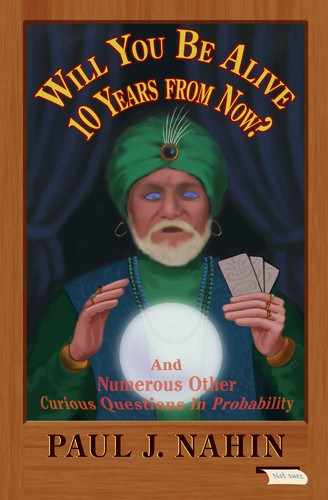Two Ways to Proofread
6.1 THE PROBLEM
As anyone who has ever written a book can tell you, one of the most important tasks—but a tedious one—is proofreading the initial typeset pages. There are always misprints! The only way to catch and correct them is through careful reading of the entire book, a job that is all too easy to nod off on while doing. There are at least two ways to do it, where I’ll make the following two assumptions: (1) there is an unknown total of m misprints in the book, and (2) the probability a reader spots a misprint, given that he is looking at a misprint, is a constant (ideally, we’d hope that probability is 1, but that’s probably not very realistic).
Method 1: Two readers independently examine the page proofs. Reader 1 flags a misprint and Reader 2 flags b misprints. There are c flagged misprints in common. Assume Reader 1 has probability p of spotting a misprint, and Reader 2 has probability q. We know p and q from the past performance of each reader.
Method 2: One reader reads the proofs at two different times, times sufficiently separated that we can assume the two readings are independent. On the first reading he flags a misprints and circles them in red so he’ll know he’s already found them when he does the second reading. On the second reading he spots b additional misprints.
For each method, find an expression for U, the number of remaining, undetected misprints. Evaluate your two expressions for these values: for Method 1, a = 30, b = 25, and c = 5, and for Method 2, a = 30 and b = 20.
For Method 1, we can write
mp = a, mq = b, mpq = c.
The third equation follows by reasoning that mp is the number of misprints found by Reader 1, and it is from that subset of misprints that Reader 2 must find the misprints that both readers find in common. So,
![]()
and
![]()
Thus,
![]()
and therefore
![]()
Since the total number of different misprints spotted is a + b − c, the total number of undetected misprints is given by
![]()
or, for Method 1,
Notice carefully that there is no explicit dependence in U1 on either p or q, but rather the influence of these two probabilities is in the particular values of a, b, and c that occur. For the values given,
![]()
For Method 2, we can write
mp = a
and
(m − a) p = b.
So,
![]()
and thus
![]()
or
ma − a2 = mb.
This quickly gives us
ma − mb = a2 = m(a − b)
and therefore
Since the total number of misprints spotted is a + b, the number of undetected misprints is given by
![]()
or
![]()
For the values given,
![]()
The numerical results for U1 and U1 are pretty discouraging! Writing a zero-error book appears to be a very difficult task. I suspect, in fact, that it’s pretty much a practical impossibility.
